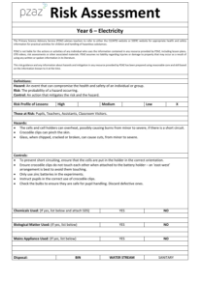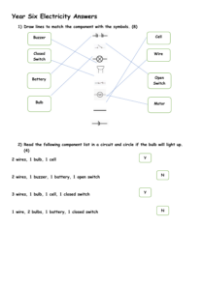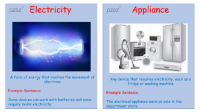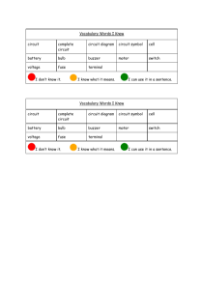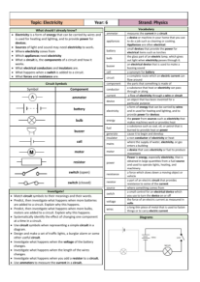Electricity - Assessment
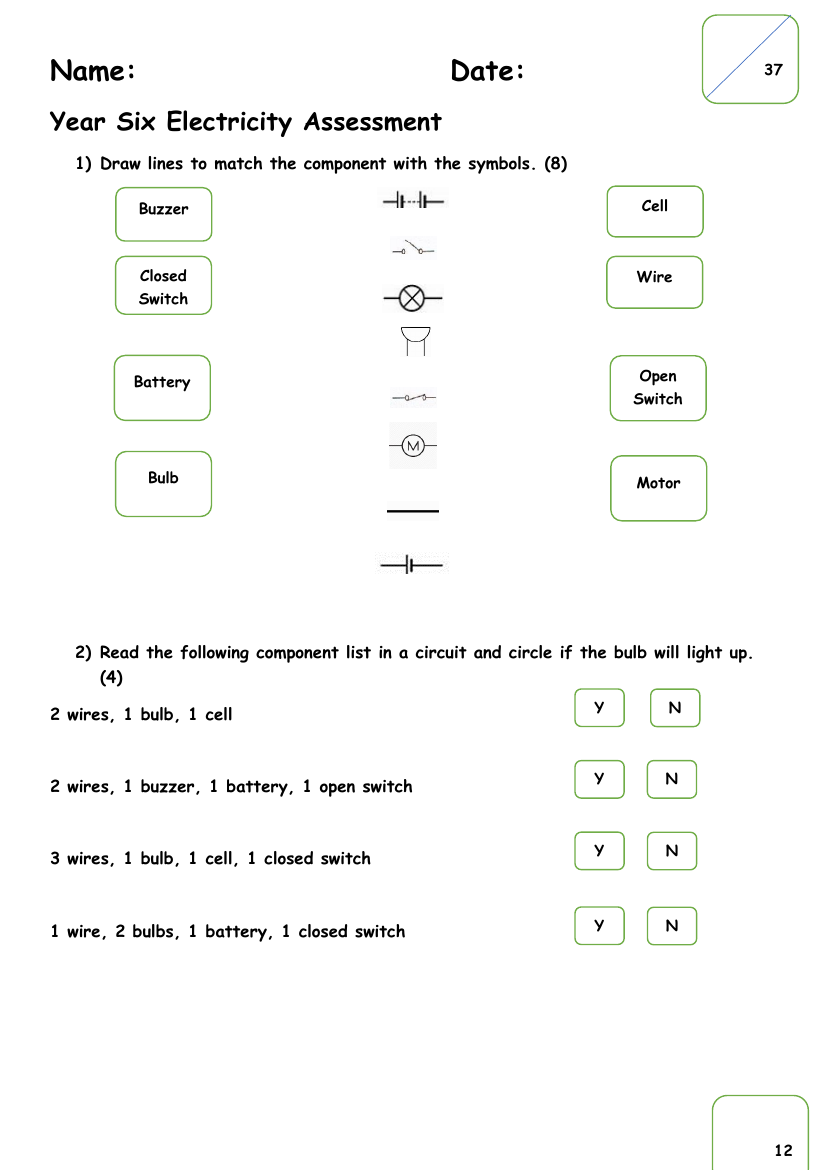
Science Resource Description
The Year Six Electricity Assessment is a comprehensive test that evaluates students' understanding of electrical circuits and components. The first task requires students to match electrical components with their corresponding symbols, an essential skill for interpreting circuit diagrams. This is followed by a practical exercise where students must read a list of components used in a circuit and determine whether or not a bulb will light up. They must consider the presence of essential elements like wires, cells or batteries, and the state of switches (open or closed) to make their judgement.
Further into the assessment, students are asked to draw their own circuit that includes two bulbs, wires, a buzzer, and a cell, and then state how many wires they would need to complete the circuit they've drawn. This tests their ability to not only visualize but also plan a functioning electrical circuit. They are also tasked with listing components and their quantities for a given circuit, as well as diagnosing a non-functioning bulb within a circuit and proposing a solution to fix it. These questions assess students' problem-solving skills and their understanding of circuit connectivity and functionality.
In the latter part of the assessment, students analyze the results of an experiment conducted by Ahmed and Libby, which investigates the effect of the number of cells on the speed of a motor. They must complete a results table, identify any anomalies, and suggest ways to verify the accuracy of the results. The assessment also challenges students to identify the independent variable in the experiment and deduce the maximum number of batteries used. Finally, students must articulate Ahmed and Libby's conclusion from their experiment and propose another investigative activity involving different circuit components, fostering their ability to apply learned concepts to new scenarios.


